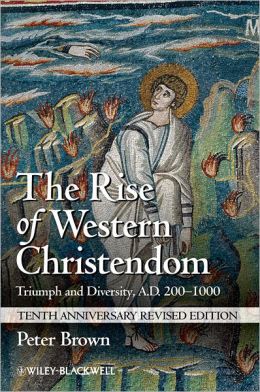In the "Preface to the Tenth Anniversary Revised Edition" of his book, the Rise of Western Christendom (Wiley-Blackwell, 2013), historian Peter Brown makes the point that the emergence of Western European Christendom out of the Roman Empire was marked as much by continuities as discontinuity. He notes that traditionally it is the kings, warriors, bishops, and missionaries who have been the focus of historical interest. They have dominated the story of the emergence of Medieval Europe. Many historians have told the tale, furthermore, as if it was a steep decline into social and cultural darkness marked by catastrophe. Brown makes it clear that it wasn't really like that. The transformation of Europe in the centuries from AD 200 to 1000 was a slow long process. Common people making uncountable numbers of small daily decisions played as important a part as did kings and bishops, warriors and missionaries. Significant elements of the secular Roman past persisted quietly into an age that we usually considered to be entirely dominated by the church. Brown doesn't put it this way, but it is as if there were layers of change, some obvious and on the surface, others more subterranean and unseen even by those living through the time.
Brown offers a potentially valuable way of re-imagining the history of the Christian faith in Thailand. Given the fact that almost all of our source material for the study of Christianity in Thailand comes from missionaries until well into the twentieth century, it is only natural to focus on them as the core of the story. Brown challenges historians of Christianity in Thailand, however, to find creative ways to refocus our attention on the people in the pews—to see, for example, how family culture and traditions influenced the reception and practice of the Christian faith by the early generations of converts. In what ways, then, did the Christian faith that emerged in northern Thailand differ from that in Bangkok and how did southern Thai Christianity differ from them both?
Changing focus in this way is not easy when our records are in English and written by individuals who were mostly distant from the day to day practices esp. in the rural churches. They, furthermore, intentionally sought to instill as western a form of the faith in the converts as possible. Still, it is part of the historian's task to read between the lines, ferreting out hidden implications in the record that we have. And, compared with the sources that historians of early Medieval Europe have to work with, we can hardly complain. Our is by most any measure a resources-rich field of historical study. The layers of change are there, if only we have the wit to see them and interpret them in a way faithful to the past that actually happened.
